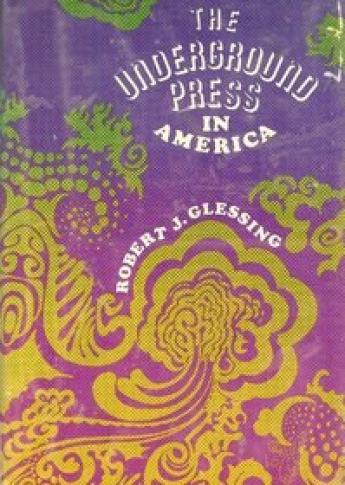Tip
Collecting Rare Books and First Editions - The Dismal Science of the Mimeo Revolution

By James Birmingham
Digging through used bookstores, I always keep a look out for books that covered aspects of the Mimeo Revolution when it was a current event. Jeff Nuttall's Bomb Culture is a good one of course. There are many more books on the Underground Newspaper as opposed to the little magazines and Roger Lewis' Outlaws of America and Robert Glessing's The Underground Press in America are two examples.
What I like about these books in contrast with a more recent take, like Smoking Typewriters, is that they are not afraid to provide tons of information about the logistics and economics of printing and distributions. Glessing (more than Lewis) provides some great details on what it actually cost to put out an underground paper in terms of supplies, manpower, and printing as well as the money to be made (or not) on distribution. For example, leasing of IBM Selectric typesetting equipment was about $150 per month whereas a new Linotype or Intertype machine for letterpress was $20,000 installed. Or Glessing explaining that a four-unit web-fed offset press was $20,000 a unit or about $100,000 to get up and running. The sunk costs made it necessary for small printers to actively search out jobs to fill downtime and these printers were willing in some cases, like Ed Sanders, to print anything. It is interesting to know that the Los Angeles Free Press was started with $15 in capital and quickly grew from four pages to 48 with weekly subscriptions of 95,000 and expenditures of $15,000. Or how about that East Village Other paid full time staffers $45 a week, but the Helix in Seattle provided food and lodging? Classified sex ads, which were indispensible for underground papers, brought in $6 per inch, and the Dwarfe, an underground paper in Phoenix, charged $100 for a full page ad for a circulation of $10,000.
Contemporary accounts, be they books or news articles, are full of this type of information and incredibly important for understanding the nuts and bolts and day to day activities of countercultural publishing. Like I said such information is more common for the Underground Press as opposed to the Mimeo Revolution, but that said spending some time digging around in contemporary sources definitely will paid some dividends in understanding the economics of counterculture printing.
The collecting tip is published in Mimeo Mimeo. Artists’ Books, Typography and the Mimeo Revolution. It is presented here by permission of the author. Mimeo Mimeo is a forum for critical and cultural perspectives on artists' books, typography and the mimeograph revolution. Blog and periodical feature essays, interviews, artifacts, and reflections on the graphic, material and textual conditions of contemporary poetry and language arts.
